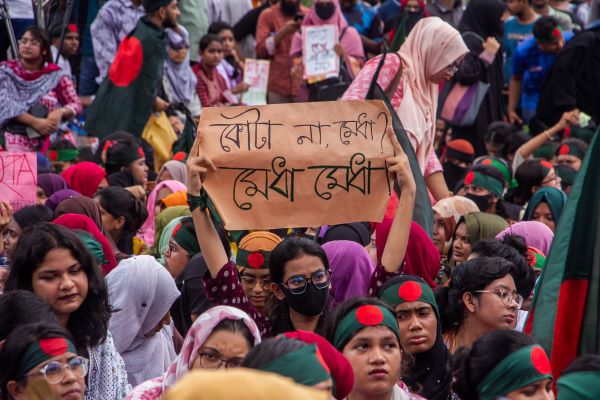Bangladesh PM Sheikh Hasina (now ex-PM) is in India and will continue staying in India until UK grants her political asylum. Here in our Bangladesh Crisis series, we share 5 reasons why Sheikh Hasina resigned and flee Bangladesh.
1. Student-Led Protests in Bangladesh: The Main Reason Why Sheikh Reason Resigned
The main reason for Sheikh Hasina’s resignation was the massive protests led by students. These protests started because of a government quota system that reserved 30% of government jobs for the children of 1971 Bangladesh Liberation War veterans.
When the Supreme Court reduced this quota to 5%, the government accepted the decision. However, students were still angry and continued protesting. They demanded justice for the violence and killings by the police and security forces. The situation escalated when thousands of protesters stormed Hasina’s residence, demanding her resignation.
2. Violent Clashes and Rising Death Toll
The protests turned violent, leading to clashes between protesters and security forces. Nearly 300 people died in these confrontations, increasing public outrage and putting more pressure on the government. Reports indicated that security forces and the ruling Awami League’s student wing were involved in the brutality. The high death toll and violence drew international attention and condemnation, making it harder for Hasina to stay in power.
3. Government’s Heavy-Handed Response
In an attempt to control the situation, the government imposed a nationwide curfew and cut off internet services. Hasina accused the protesters of being criminals and not genuine students. Despite these measures, the protests grew stronger, with demonstrators rejecting her offer to negotiate. The government’s harsh response only fueled the protesters’ determination and increased the intensity of the demonstrations.
Also Read: Know all about Iran Israel War: When and What Happened
4. Military Intervention and Interim Government
As the situation worsened, the Bangladesh Army stepped in to restore order. Army Chief Waker-uz-Zaman announced the formation of an interim government and took responsibility for the violence, promising to investigate the killings by armed forces. The military’s involvement showed that Hasina’s position was no longer tenable. The army chief’s announcement of her resignation marked the end of her 15-year rule and highlighted the severity of the crisis.
5. Sheikh Hasina Resigned Due to Pressure from Family and Safety Concerns
Amidst the growing unrest, pressure from her family also influenced Hasina’s decision to flee the country. Her son, Sajeeb Wazed Joy, mentioned that she had been considering resignation due to safety concerns. The storming of her residence by protesters was the final push, forcing her to prioritize her safety and that of her family. Leaving Bangladesh showed the seriousness of the situation and the immediate threat to her life.
Sheikh Hasina’s resignation and departure from Bangladesh are significant events in the country’s history. The combination of student-led protests, violent clashes, the government’s harsh response, military intervention, and pressure from her family led to her decision. As Bangladesh moves forward, the formation of an interim government and investigations into the recent violence will be crucial in restoring peace and stability to the nation.
For more updates on this developing story and other news, stay tuned.
Featured Image Attribution: Rayhan9d, CC BY-SA 4.0 https://creativecommons.org/licenses/by-sa/4.0, via Wikimedia Commons.


